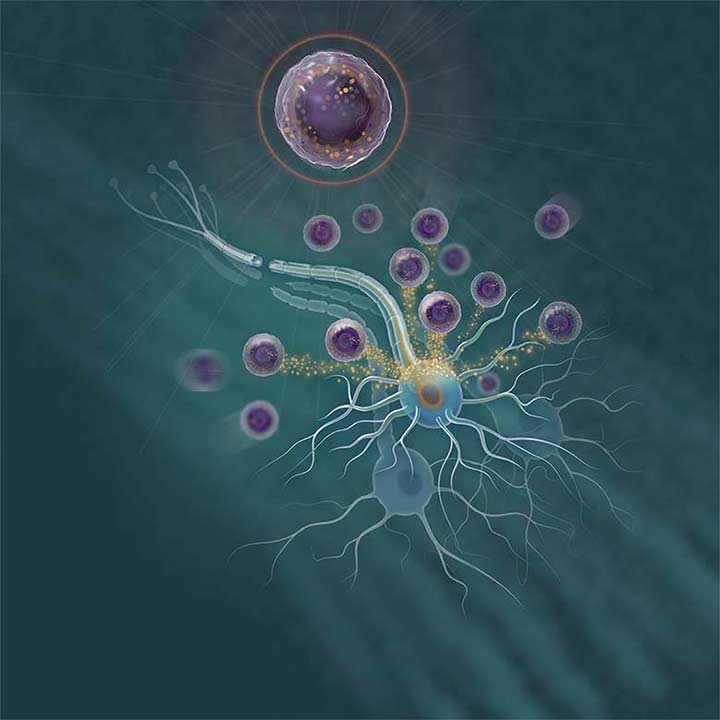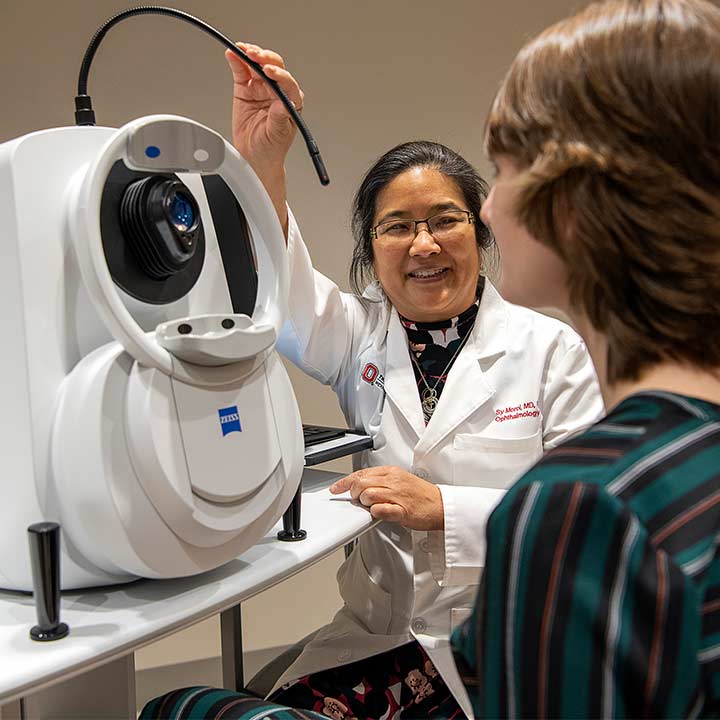
Finding neurology's 'holy grail'
 As one of the leading glaucoma clinician-scientists in the nation, Sayoko Moroi, MD, PhD, professor and chair of the Department of Ophthalmology and Visual Sciences (external link) at The Ohio State University College of Medicine, has spent much of her 35-year medical career diagnosing, treating and researching glaucoma.
As one of the leading glaucoma clinician-scientists in the nation, Sayoko Moroi, MD, PhD, professor and chair of the Department of Ophthalmology and Visual Sciences (external link) at The Ohio State University College of Medicine, has spent much of her 35-year medical career diagnosing, treating and researching glaucoma.
The one question that patients continue to ask that fuels her push toward new discovery is “Doctor, will I go blind?”
“You have to be brave when facing the grim reality that, despite advances in medications and surgery, 10% of patients with glaucoma will still lose their sight,” says Dr. Moroi. “When you lose vision, you lose independence and, often with that, hope.”
Dr. Moroi’s own father was diagnosed with glaucoma while she was in medical school. Throughout her career at Duke University Eye Center, the University of Michigan and now Ohio State, Dr. Moroi has contributed to more than 40 research projects that span glaucoma pharmacology, genetics, patient outcomes and eye pressure variability. She studies how various patient populations differ in their susceptibility to a particular disease or their response to a specific treatment to create solutions to disease management.
A new study with Raymond Gao, PhD, (external link) associate professor of Ophthalmology and Visual Sciences and Biomedical Informatics (external link) at the Ohio State College of Medicine, aims to determine how individual patients respond to particular treatments by applying the known genetic risk factors of glaucoma and accounting for factors that regulate eye pressure, like fluid production, fluid drainage and venous pressure.
Intraocular pressure (IOP) is a known risk factor associated with glaucoma. The good news is, maintaining a steady state of IOP, which is largely a function of aqueous humor (AH) dynamics, can control glaucoma.
“This is dependent on a delicate balance between AH production, or inflow, and the rate of AH egress, or outflow, from the eye,” says Dr. Moroi. “Identifying those patients who have large eye pressure fluctuation is an important step in working to control it.”
In another study, funded by the National Institutes of Health, Dr. Moroi and her team, which includes researchers at the Mayo Clinic and the University of Nebraska, examine physiological factors that regulate eye pressure which could lead to patients being profiled for risk of blindness using a combination of standard glaucoma tests and genetic tests.
Through yet another study, funded by the National Science Foundation, Dr. Moroi and a team of engineers from the University of Michigan are imaging eye drainage areas and studying biomechanical tissue properties to develop a “drainage map” of an individual patient with glaucoma.
Dr. Moroi has been working to increase access to health care by growing her department’s teleophthalmology program. Teleophthalmology employs medical equipment designed for taking ocular images along with telecommunications technology so that primary care clinicians and emergency departments can screen patients for diabetic retinopathy, sickle cell retinopathy and glaucoma.
Under Dr. Moroi’s leadership, the department has implemented new clinical models for glaucoma care, including a drive-through IOP clinic and patient access to a home monitoring system that gathers eye pressure data using the Icare HOME tonometer.
Dr. Moroi and her team are constantly collecting large datasets from genetic studies, health records, imaging and biomedical tissue studies. She recently submitted a research proposal to fund the development of a Data Science Division that would use artificial intelligence and machine learning to automate analytical model building.
“This would allow us to carry out research tasks with more accuracy and at greater speed,” says Dr. Moroi. “And use data to help determine the ‘right’ glaucoma treatment algorithm for a given patient based on the disease stage, the type of glaucoma and the degree of IOP fluctuation.”
Each step they take toward preventing glaucoma-related blindness is a monumental step forward for patients–like her father–living with the disease.